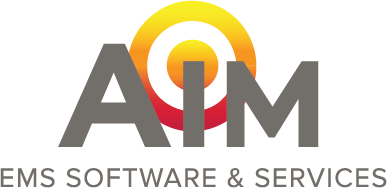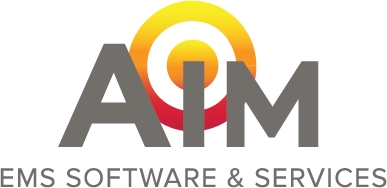
While redundancy in phone lines and staff can ensure that no EMS dispatch events go untended, redundancy has no place in data entry. In fact, manual data entry in EMS dispatch can actually create problems of its own. With something as important as EMS dispatch, human error must be mitigated as much as possible. By utilizing a single point of data entry during call-taking and dispatching, the entire EMS dispatch workflow improves.
The entire EMS patient care record continuum's initial point of data entry should start with the EMS dispatch call types (emergency or non-emergency (scheduled/non-scheduled). In certain cases, requestors may have the ability to enter scheduled transports through an EMS portal, but this article will consider the agency's EMS dispatch call center as the initial point of data entry.
From a best practice and EMS workflow standpoint, the EMS dispatch call center should have a single electronic record for collection of EMS dispatch information. EMS dispatch call centers must efficiently disseminate the same information into the EMS system once. Manual entry, in addition to being prone to inaccuracy, is incredibly inefficient. If the EMS dispatch department works via spreadsheets or computer-aided dispatch software, eliminating redundant, wasteful data entry is as simple as linking those logs and documents. Other methods cannot match the efficiency and accuracy of computer aided dispatch.
EMS Dispatch Systems Utilize Initial Point of Entry For Successful Execution
From specific demographics, patient care data, to EMS billing data, the most important ambulance transport data input presents itself at the time of EMS dispatch. Accumulated data goes to the transport crew's notification device for transmission. Eventually, the necessary and important EMS dispatch data makes its way to the final ePCR, and the ambulance transport service invoice goes out to the patient or the patient's insurance carrier.
EMS Data Validation Must Occur at Dispatch
With handwritten records, data validation was impossible. Validations for things like zip codes could not be verified against municipality names or geo codes. Consequently, when validation occurred later, headaches ensued and valuable time was lost.
Validating EMS dispatch data at the time of input ensures a smoother transition and increased accuracy of the data an d increases accuracy of the overall end document, the ePCR, electronic claim, or invoice. Data validation includes comparing data input against previous EMS dispatch records. Validation against previous addresses, demographics, and patient care information for regular/ repeat patients drastically increases efficiency and accuracy in accessing the patients. This translates to better response and reimbursement time.
Transitioning Data from Collection to EMS Dispatch
Data validation at the initial point of data collection ensures that the transporting unit and crew receive accurate data from EMS dispatchers as fast as possible. EMS responders won't waste time at the wrong address and delays will be greatly decreased. Whether it’s an emergency response and time is of the essence, or if it’s a scheduled transport deep inside a vast hospital system of hallways, offices and patient rooms, it is imperative to access the patient in a timely manner.
Additionally, this helps to assure less communication errors which can happen with unnecessary radio or phone communications that could very well result from the responding crew being confused or even lost, preventing them from accessing the patient. When any delay could mean a life is lost or seriously impaired, every second counts.
Assessing The Opportunity Cost of a Single Point of Data Entry for EMS Dispatch
Providing that there is a properly designed EMS data workflow, utilizing an EMS dispatch system can:
- Eliminate needless, repetitive manual entry of EMS dispatch data
- Prevent response delays for emergency and scheduled or unscheduled non-emergency EMS dispatch requests for service
- Improve the accuracy of EMS Dispatch data during transmission to each successive phase of the patient care document process
Proper computer aided dispatch makes it easier for you to help those who need it most and speed up the reimbursement process at the same time.
Solving The EMS Dispatch and Workflow Efficiency Dilemma
Simplifying the EMS dispatch process begins with single point data entry and data validation. Despite being essential for optimal efficiency, some EMS providers find it challenging to implement an effective EMS dispatch system that fits their workflow. It's important to find an EMS dispatch system that will:
- Assure that there is one single point of data entry exists during EMS dispatch.
- Include data validation, which encompasses validating individual fields as well as validating the EMS dispatch data being added to previously input data on repeat patient transports. Recalling the initial point of entry as the standard.
- Make sure that the EMS Dispatch system, as part of the EMS workflow, has been properly engineered to electronically and automatically transfer EMS data to the next phase of the patient transport request for example; the transporting crew’s EMS dispatch device, the ePCR and, eventually, the patient’s bill. Afterward, the insurance carrier submission cycle or self-pay process begins and concludes.




